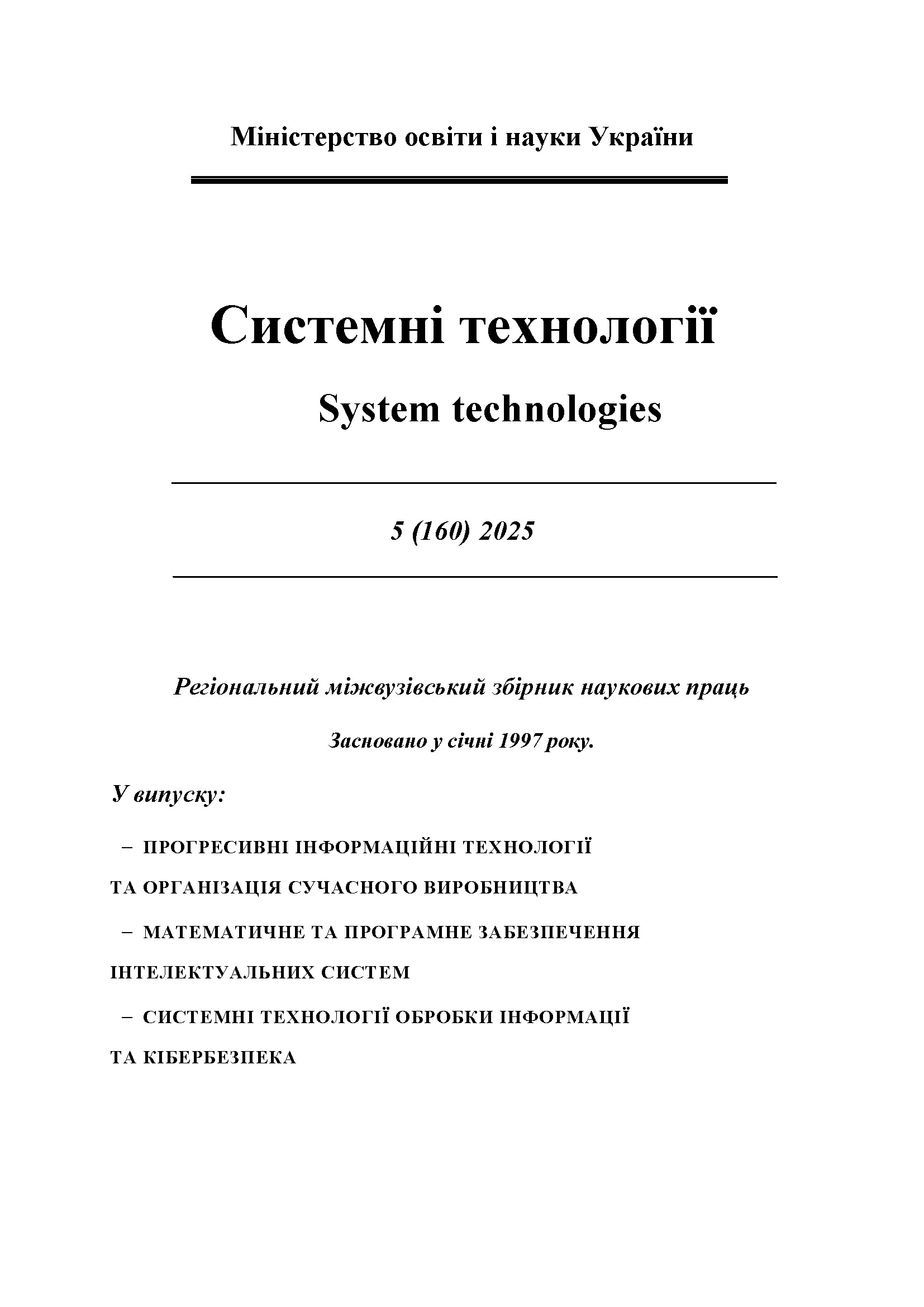ADVANCED DAMAGE PLASTICITY MODELLING AND CALIBRATION STRATEGIES FOR ACCURATE FINITE ELEMENT ANALYSIS OF UNREINFORCED CONCRETE IN THIN WALLED STRUCTURES
DOI:
https://doi.org/10.34185/1562-9945-5-160-2025-04Keywords:
finite‑element analysis, damage‑plasticity modeling, fiber‑reinforced concrete, recycled‑aggregate concrete, thin‑walled formwork, model calibrationAbstract
Accurate prediction of unconventional, unreinforced concretes in three‑dimensional finite‑element analysis demands a synthesis of advanced constitutive theory, rigorous experimental calibration, and careful numerical implementation. This study consolidates recent progress and remaining challenges in modeling slag‑blended, recycled‑aggregate, fiber‑reinforced, and ultra‑thin formwork concretes within the ANSYS environment. A literature survey identifies three dominant strategies for plain concrete: the legacy smeared‑crack SOLID65 element, generalized Drucker–Prager plasticity with user‑defined damage, and detailed mesoscale representations that resolve aggregates, mortar, and interfaces. Comparative findings show that damage‑plasticity formulations, exemplified by the Concrete Damaged Plasticity (CDP) model, reproduce load–deflection responses and crack patterns within fifteen percent of experimental results when parameters are calibrated against comprehensive test sets that include compression, tension, fracture, and time‑dependent data. Calibration protocols remain inconsistent across studies, hindering re-producibility and cross‑comparison. The absence of an open benchmark database for non‑standard concretes is highlighted as a key barrier to consensus on default parameters. Thin‑walled elements expose additional difficulties: geometric nonlinearity couples with pro-gressive stiffness degradation, causing mesh‑dependent fracture energy dissipation and solver convergence issues. Remedies include refined through‑thickness meshes, nonlocal regulariza-tion, and robust arc‑length solution controls. Explicit crack‑tracking techniques such as phase‑field fracture and cohesive segments offer improved fidelity, especially for fiber‑rich mixes where residual tensile capacity governs serviceability, yet systematic validation of these methods remains sparse. Long‑term phenomena such as creep, shrinkage, and durability, along with high‑rate behaviors under impact and seismic loading, are underrepresented in current model verification, particularly for slag‑rich and recycled‑aggregate mixes. A practi-cal roadmap is proposed that integrates five core actions: creation of a public benchmark da-tabase with fully documented laboratory tests; development of unified modeling protocols that specify calibration sequences, error metrics, and reporting formats; targeted investment in explicit fracture models for thin and fiber‑reinforced members; expansion of long‑term and dynamic experimental programs; and adoption of machine‑learning tools to automate pa-rameter identification and flag anomalous model behavior. Complementary software ad-vances, including plug‑and‑play material subroutines and graphical calibration wizards, are recommended to lower the expertise threshold for practicing engineers. Collectively, these measures chart a pathway from current academic advances toward robust, industry‑ready simulations capable of guiding the design of sustainable, reinforcement‑free concrete struc-tures.
References
Barghlame Hadi, CONVERGENCE PROBLEMS WITH ANSYS'S SOLID 65 FINITE ELEMENT IN CONCRETE-FILLED TUBULAR (CFT) COLUMNS AS A CASE STUDY, Archives for Technical Sciences 2023, 28(1), 29-38,
http://dx.doi.org/10.59456/afts.2023.1528.029B
Bilal, K.A.; Mahamid, M.; Hariri-Ardebili, M.A.; Tort, C.; Ford, T. Parameter Selection for Concrete Constitutive Models in Finite Element Analysis of Composite Columns. Buildings 2023, 13, 1759. https://doi.org/10.3390/buildings13071759
Yong Yu, Yu Zheng, Yongchang Guo, Shouwang Hu, Kaihui Hua, Mesoscale finite ele-ment modeling of recycled aggregate concrete under axial tension, Construction and Building Materials, Volume 266, Part A, 2021, 121002, ISSN 0950-0618, https://doi.org/10.1016/j.conbuildmat.2020.121002.
Guan, Q.; Yang, M.; Shi, K.; Zhang, T. Experimental Study and Finite Element Analysis on the Flexural Behavior of Steel Fiber Reinforced Recycled Aggregate Concrete Beams. Materials 2022, 15, 8210. https://doi.org/10.3390/ma15228210
Pokorska I, Poński M, Kubissa W, Libura T, Brodecki A, Kowalewski Z. Computational Fracture Evolution Analysis of Steel-Fiber-Reinforced Concrete Using Concrete Continuous Damage and Fiber Progressive Models. Materials (Basel). 2023 Aug 15;16(16):5635. doi: 10.3390/ma16165635. PMID: 37629926; PMCID: PMC10456427.
Di Luzio, G., & Cusatis, G. Solidification–microprestress–microplane (SMM) theory for concrete at early age: Theory, validation and application. International Journal of Solids and Structures, 50(6), 957–975, 2013. https://doi.org/10.1016/J.IJSOLSTR.2012.11.022
Li J, Liu Y, Li P, Wang H, Chen P. Study on the Suitability of Concrete Constitutive Mod-els for Perforation Simulation. Materials (Basel). 2024 Nov 14;17(22):5562. doi: 10.3390/ma17225562. PMID: 39597387; PMCID: PMC11595891.
Murthy, A.R., Prasanna, P.K., Nipun, G. et al. Analysing the influence of ground granu-lated blast furnace slag and steel fibre on RC beams flexural behaviour. Sci Rep 14, 4914 (2024). https://doi.org/10.1038/s41598-024-51164-x
Rongzong Wu, John Harvey, Jeremy Lea, Angel Mateos, Shuo Yang, and Noe Hernandez Updates to CalME and Calibration of Cracking Models, 2021
Wan-Wendner, Roman & Vorel, Jan & Smith, Jovanca & Hoover, Christian & Bazant, Zdenek & Cusatis, Gianluca. (2014). Characterization of concrete failure behavior: A com-prehensive experimental database for the calibration and validation of concrete models. Materials and Structures. 48. 10.1617/s11527-014-0426-0.
Zhengwei Li, Meizhong Wu, Jiawei Wu, Yujun Cui, Xingwei Xue Steel Fibre Reinforced Concrete Meso-Scale Numerical Analysis, Advances in civil engineering, 2020, https://doi.org/10.1155/2020/2084646
Downloads
Published
Issue
Section
License
Copyright (c) 2025 System technologies

This work is licensed under a Creative Commons Attribution 4.0 International License.















